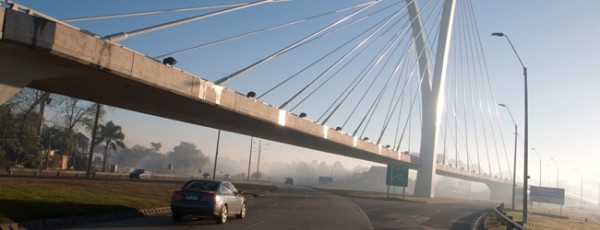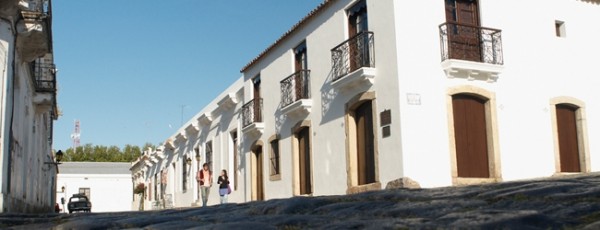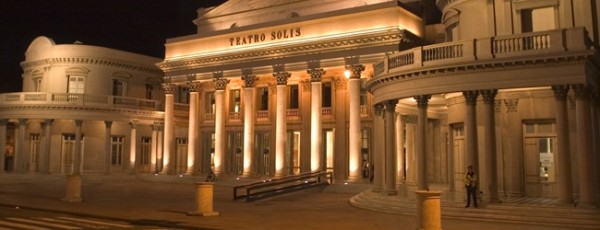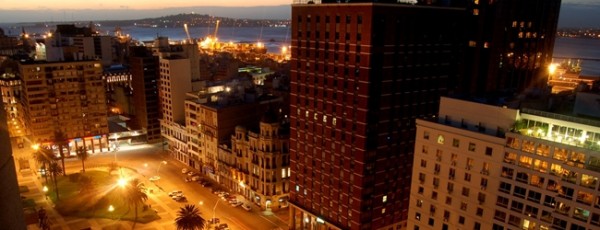Filming Uruguay with Lucila Bortagaray of the Uruguay Film Commission
Lucila has a degree in Audiovisual Communication and worked as a freelance Producer and Location Scout on all manner of media for nine years until 2009. She then became head of the Uruguay Film Commission & Promotion Office, which was created in May 2009.
The commission promotes Uruguay locations and audiovisual infrastructure, while also aiming to contribute to the international promotion of national audiovisual production.
Tell me about Uruguay as a filming location
Uruguay offers all kinds of locations for the most diverse productions. Within short distances you can find fields, beaches and eclectic architecture that offer a wide variety of styles and locations, both in the capital and in more rural areas.
From the colonial style, through Art Déco up to futurist structures such as Carrasco's new international airport and the Torre de las Comunicaciones or the World Trade Center. Places as different as Old Havana, Paris, London, Germany, the Caribbean, Italy and Ireland have already been recreated in Uruguay.
Uruguay has a population of 3.3 million and has 220 km of Atlantic coast, 378 km of coast by the Río de la Plata and a 435 km-coastline along the Río Uruguay.
We have qualified bilingual crew and there is a wide range of rental equipment available. It has a solid infrastructure for the movie industry, either for advertising, feature films or TV shows that meets international standards. It also has post-production houses and studios for animation and audio work, all at highly competitive prices.
In recent years Uruguay has produced highly qualified professionals (mostly bilingual) who have stood out at international productions in almost every filmmaking department.
What locations are most commonly used by film and TV crews when they come and film in the area?
Most commonly productions use our beaches and also the urban environments for their wide variety of architectural styles.
What are the more unusual locations in your region that our readers would not necessarily associate with the region? Any personal favourites?
One of our rare locations is an eroded place in Punta Rubia - a beach next to La Pedrera, in Rocha, about two and a half hours from Montevideo.
I also particularly like the scenery of Villa Serrana, a place located in the hills of Minas (also two and a half hours from Montevideo) and the department of Lavalleja, 300 metres above sea level. It is considered a magic location because of the energy it transmits.
What has been your most difficult location assignment to date and why?
We received an inquiry through the AFCI’s website for an action movie being made by Paramount Pictures. They where looking for a gigantic warehouse or factory setting - it was supposed to be ultra-modern, clean and shiny, almost to the point of looking futuristic.
We spent some time looking for this kind of location and finally we realised that it could be found in the engine room of Salto Grande’s Dam, 500 km north of Montevideo. So we sent some photographs and the Producer was really excited. Unfortunately this project didn’t come together in Uruguay - or at least it hasn’t yet - but it was a really good experience for us because it seemed impossible to find this kind of location in our country.
What types of production do you work on most?
Mainly we work on TV commercials, but there are also TV series, feature films and documentaries projects. Recent higher-profile shoots have included an MJZ commercial for Xbox serviced by Artida Films, and a Lipton Ice Tea commercial co-produced by Stink in London, Radical Films in the US and Landia in Argentina, and serviced by Oriental Films.
Are there any tips that you would like to share about filming in Uruguay?
We have a moderate climate. It has opposite seasons to the northern hemisphere, which allows producers to film in the summer during the boreal winter.
Casting is very varied. Uruguayans generally originate from European countries like Spain, Italy through a long history of migratory waves. It is estimated that nowadays 6% of the population has African origins, which reflects strongly in the culture, especially in music.
Which are the best airports to use? Any tips on customs clearance or film-friendly freight agents?
Uruguay’s main airport is Carrasco International Airport, which is 30 minutes from downtown Montevideo. National Customs grants a temporary admission to Uruguay, in case equipment is brought to the country for a production.
What are the most film-crew-friendly hotels in your region and where is your favourite wrap party venue?
The most crew-friendly hotels are the Marti, the Punta Trouville and the Regency Golf in Montevideo. The best ones for clients are the Sheraton, the Trip Melia and the Belmont. My favourite wrap party venue is the Club de Pescadores in the Parque Rodó area of Montevideo. There are several Clubs that can be hired for parties.
What do you do with your time off and what would you recommend crew and cast do to visit, have fun and relax in your region?
If you are in Montevideo, I recommend going to the Rambla, to walk or bike-riding. In the winter, I recommend going to a café at the Old City in Montevideo.
Thank you
To contact Lucila, please click here.
(Image copyright: Aguaclara, Uruguay)
Related Posts
- Uruguay launches new Audiovisual sector
- Scouting in Western Norway: Where high-tech structures meet epic natural landscapes
- Spanish heritage: Scouting filming locations in historical Catalonia
- Filming in South America with Location Manager Mariano Cukar
- Filming on location in Colombia with the Colombian Film Commission
- On location with Michael Brook, Manager of Screen Auckland
- Filming on location in Jackson Hole with Location Manager Ian Gersten
- Filming on location with the Mexico City Film Commission
Related posts:
Comments
Not Logged in
You must be logged in to post a comment




There are no comments